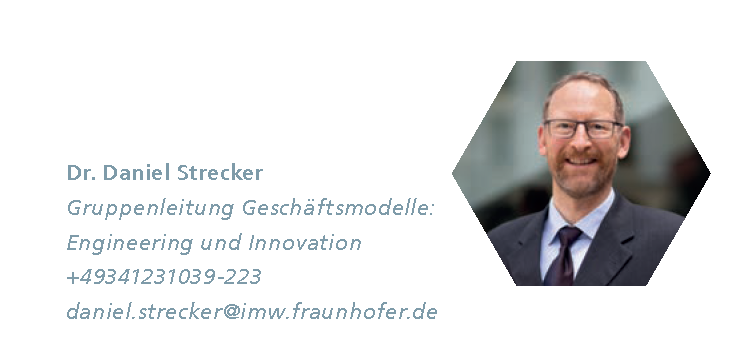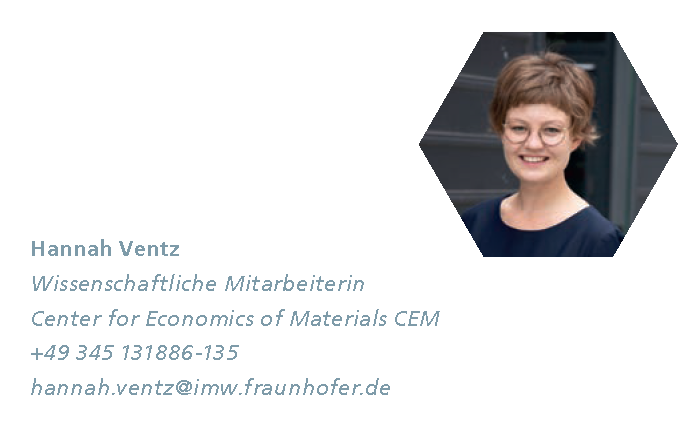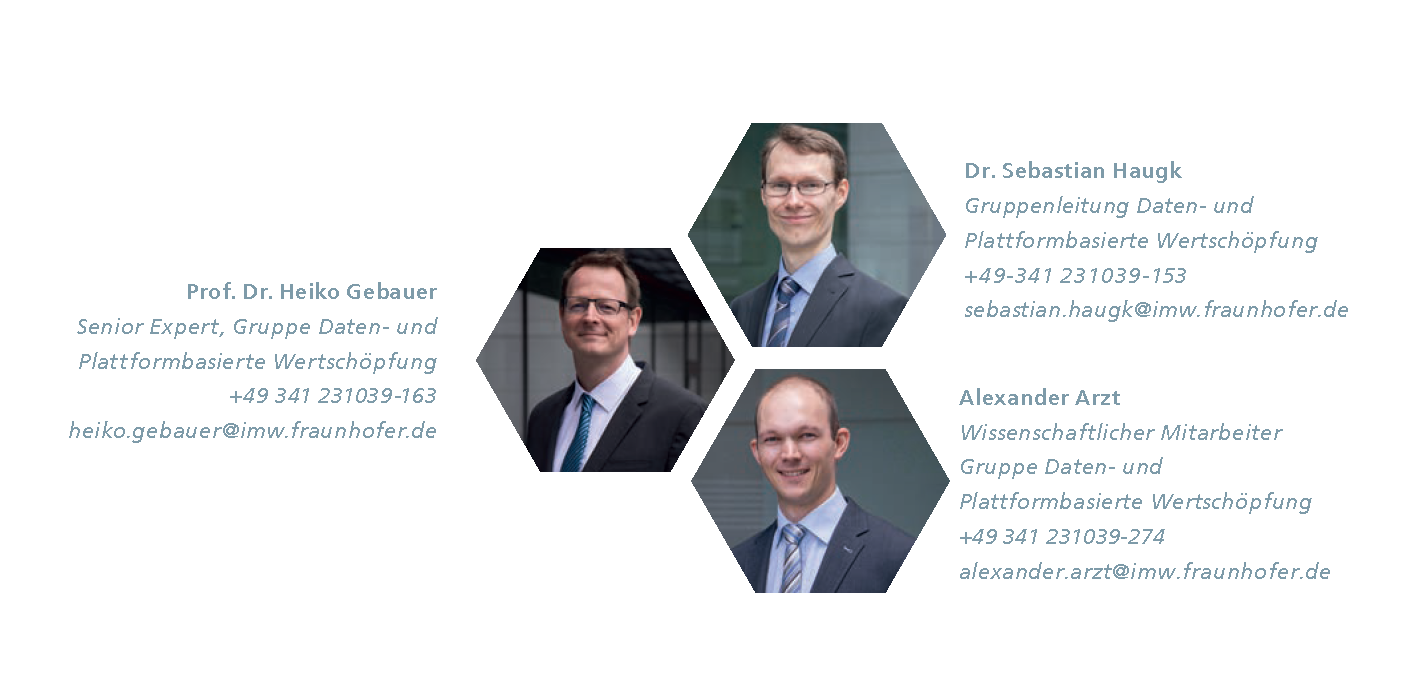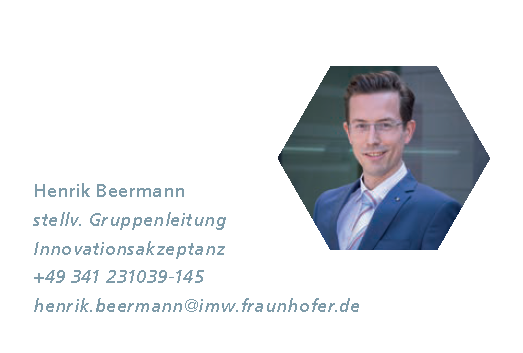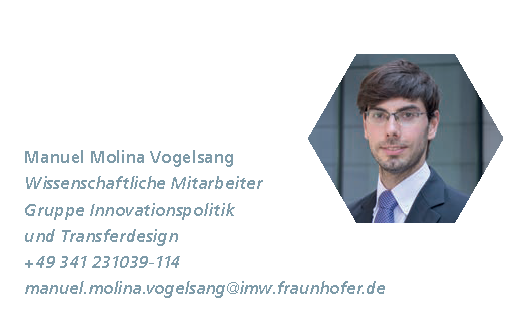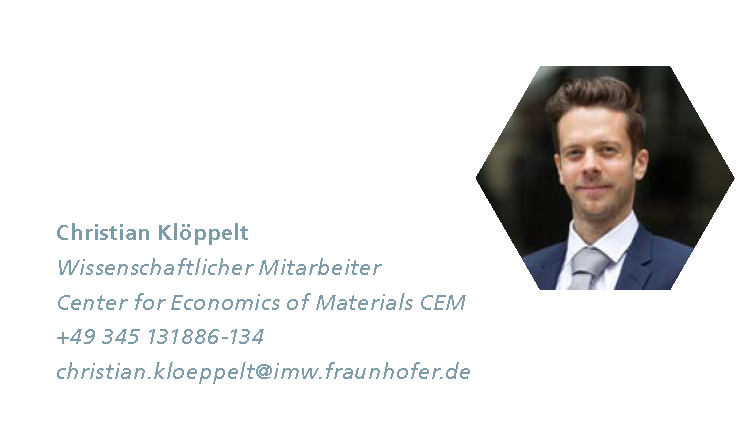Regions, entire industries, politics and society are faced with the task of making the transition to a resource-conserving way of working and living. At the same time, this transformation process offers opportunities: a switch to climate-neutral technologies and production methods, future-oriented fields of work and more social participation. In recent years, researchers at Fraunhofer IMW have studied several regional, national and international structural change processes and innovation systems.
Shaping the future – Regional development as an opportunity
Research division supports regional transformation
Regional economies can be described along so-called "development paths" that run through certain industries, research topics, technologies or narratives. Selfreinforcing effects mean that citizens, entrepreneurs or politicians in a region tend to follow these development paths unconsciously. In the best case, this leads to the specialization of a region in certain industries, and thus to the emergence of local clusters. In the worst case, past successes become obstacles for the future.
If a development path is followed for too long, even though it no longer offers regional growth – as happened, for example, in the Ruhr region in the 1960s and 1970s – new regional development paths are urgently needed. The researchers of the „Regional Development and Innovation Policy“ division, newly founded in 2021, support this path development. The geographers, computer scientists and economists support the regional, national and international transformation of regions, organizations, innovation and knowledge networks with evaluations, impact measurements and scientific monitoring. In recent years, the research team has already investigated several regional, national and international processes of regional development and derived options for action for the future.
Innovation studies support regional development of the Rhenish Mining Area
Establish lighthouse projects in a targeted manner, further strengthen the transfer of knowledge and technology between regional industry and research, and win over all stakeholders in the Rhenish Mining District for a common mission statement and uncomplicated support for regional innovation projects in companies: These are the major recommendations for action presented in the innovation study for the Zukunftsagentur Rheinisches Revier. The study is one of two publications that Fraunhofer IMW researchers produced in 2021 for a successful regional development of the Rhenish Mining Area.
The phase-out of lignite-based power generation is a major structural challenge for the Rhenish lignite mining region in the triangle formed by the cities of Aachen, Mönchengladbach and Bonn. The idea is that in the pits, that are currently occupied by excavators, future lakes, intelligent infrastructures and new industries will be created. Although the region is home to excellent research and scientific institutions, regional economic growth has so far been below the state and national averages. The coal phase-out also threatens to result in a loss of high-paying jobs and value creation in the region.
AIR model analyzes three dimensions of the regional innovation system
By analyzing the regional research landscape, the Leipzig researchers identified the fields of innovation with the greatest potential for the region's future. They also determined the strengths and weaknesses of the innovation system and derived recommendations for action to transform the mining area. For their analysis, the team used the so-called "AIR model" developed in-house. The model enables the researchers to relate three dimensions of an innovation system, namely the existing actors (A), their interactions (I) and the political-structural framework conditions; in German: Rahmenbedingungen (R). [...]
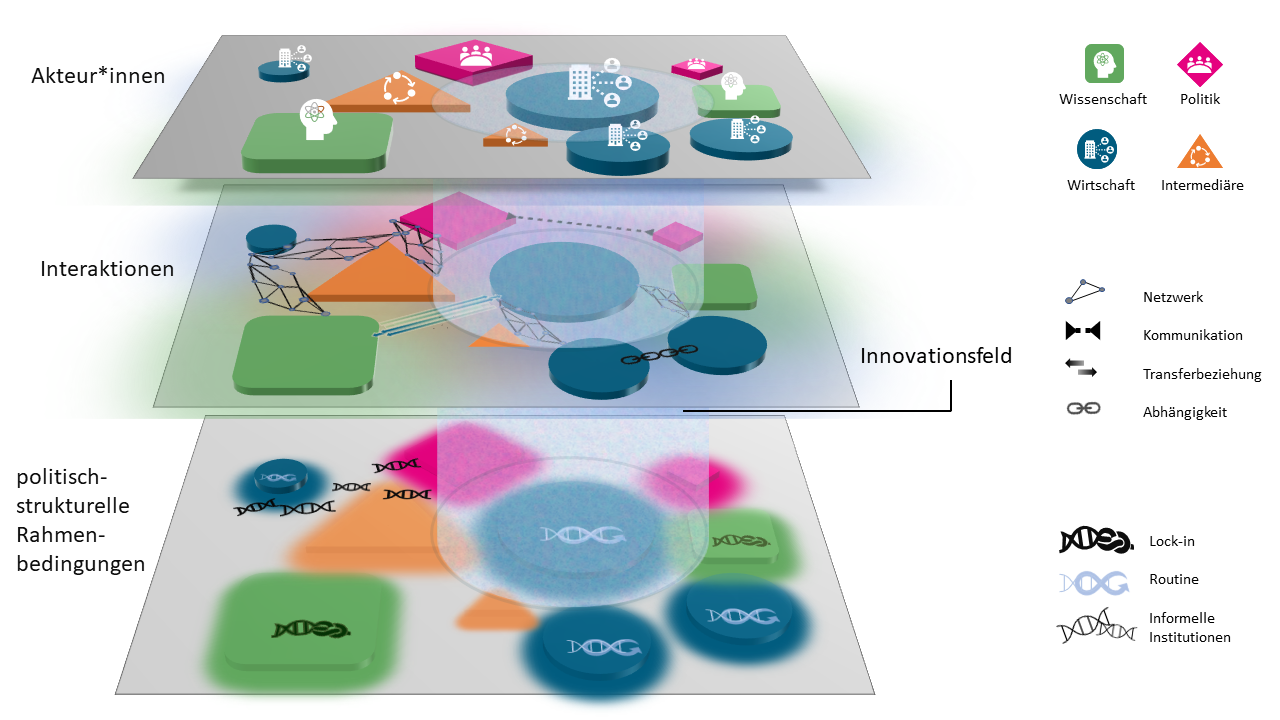
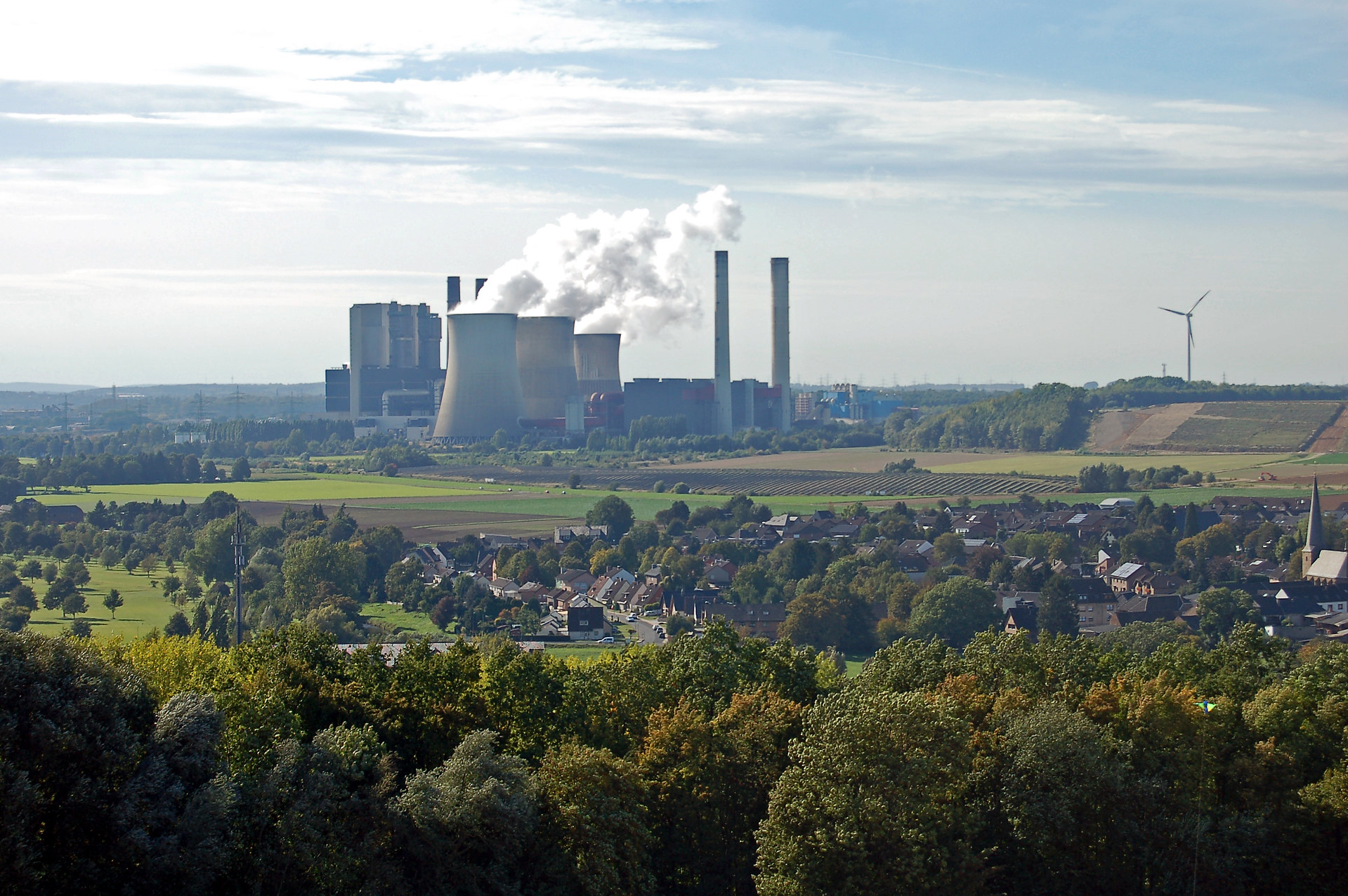
Hydrogen Hub Leipzig: Studies investigate potential for the city and central Germany
The city of Leipzig sees itself as a pioneer for ambitious climate protection. The energy-intensive industries in the region, the central German hydrogen network, the great potential for sector coupling, and also the research facilities in Leipzig provide the best prerequisites for a further expansion of the hydrogen economy in the region. Furthermore, central Germany is already one of the largest hydrogen consumers in Germany.
As part of the hydrogen strategies of the city of Leipzig and the municipal Leipziger Gruppe, a Fraunhofer research team analyzed the potential of green hydrogen for the region with two studies in 2021 in order to create additional scientific foundations for the implementation of the next steps.
Study serves as technical basis for the city of Leipzig
The Leipzig City Council had already decided in October 2020 to develop the city of Leipzig into a hydrogen city – and initiated a participatory process involving businesses, science, associations, politics and citizens. The researchers accompanied this process with a short study. They provided an overview of hydrogen strategies at the EU, federal and state levels, examined the potential for the city of Leipzig and the region of central Germany, and recommended ad hoc measures for the city and a structured participation process.
[...]
The potential of green gases for the regional development region central Germany
As low-emission and partly emission-free energy sources, "green gases" could play an important role in energy supply in the future. They are generally transported and distributed via the nationwide gas infrastructure – and represent an alternative to fossil fuels such as natural gas. The potential to produce and use "green gases" in the central German region is examined in a study under the same name, which a research team from Fraunhofer IMW and its project partners prepared for the "Innovation Region Central Germany".
In the "Innovation Region Central Germany", the counties and independent cities in Saxony, Saxony-Anhalt and Thuringia affected by the coal phase-out have joined forces to develop ideas, concepts, and projects for the future development of the region together and with other partners. The existing industrial structures around the Leuna-Buna-Bitterfeld chemical triangle are an anchor for cooperation and the development of new value chains. In the future, "green gases" could be produced there, i. e. hydrogen, synthetic gases from renewable electricity or gases from biogenic sources, especially biogas and biomethane.
"CEM-IOM": Tool for impact assessment of regional investment projects
In the study, the interactive input-output model "CEM-IOM" developed by a Fraunhofer IMW research team quantifies the economic and social impact of potential investment projects for the participating counties and independent cities for the years 2030, 2040 and 2045.
[...]
Platform-based business models for the hydrogen economy
Sponsored by politics, companies are increasingly investing in green hydrogen. But it is only by thinking along the lines of the digital world and the (platform-based) utilization of data across the entire value chain of the hydrogen economy, that the currently high investments in green hydrogen technologies will pay off.
At least, this is what experience from other sectors of the economy shows, where value creation shares are increasingly shifting from the physical to the digital world and digital business models are becoming more and more important. Researchers at Fraunhofer IMW have now investigated data- and platform-based business models for the hydrogen economy for the first time as part of the “EndaSpace PLATON” project. In their final report, the Leipzig researchers outline, among other things, seven future scenarios of what the hybrid value creation of green hydrogen could look like in 2030.
[...]
Joint project CHARMS develops sustainable solutions for historic building structures in Thailand
In Southeast Asia, too, lifestyles are changing, people are increasingly working from home as a result of COVID-19, and the demands on urban structures to reduce greenhouse gas emissions are increasing. Thailand‘s historic urban neighborhoods and residential buildings need resilient utilization concepts developed in cooperation with residents and city administrations. This is where the CHARMS research project comes in, bringing together researchers from Germany and Thailand with local governments and civil society in the Thai region of Chiang Mai. A research team from Fraunhofer IMW is leading the large-scale transdisciplinary project.
The project team‘s surveys show that the high
energy costs, poor air quality and often inadequate thermal comfort of historic wooden houses affect young residents in particular. Their demands differ from those of their parents. At the same time, an altered microclimate and high air pollution severely limit the functionality of traditional indirect cooling systems. To ensure acceptable indoor comfort, many residential buildings are equipped with active, technical solutions such as air conditioning systems. Higher energy consumption and urban heat islands are the result.
Technical and social innovations
In order to develop locally adapted, sustainable utilization concepts for these historic buildings and neighborhoods, the researchers in the project are applying research methods from various academic disciplines. The aim is to create technical and social innovations that are interrelated, improve indoor comfort for residents, and preserve the architectural heritage and cultural identity – preservation through use.
[...]
Cooperation partner Latin America: Potential for Germany‘s international research and innovation cooperation
Germany benefits from open markets, international knowledge exchange and cooperation in research, development and innovation. Global challenges such as climate change can only be solved in partnership with other countries and regions. The German government therefore promotes international cooperation not only within Europe, but with many countries around the world. Agreements on scientific and technological cooperation with Argentina, Brazil, Chile and Mexico, for example, were concluded as early as the 1960s. Cooperation with other partner countries in the region is to be established and expanded.
In order to identify suitable, joint fields of innovation and to strategically develop funding offers for joint research and innovation projects, a research team from the Technopolis Group and Fraunhofer IMW examined the status quo of German-Latin American cooperation and current developments for the Federal Ministry of Education and Research.
[...]
Scrap bonus made tangible: Recommendations for action for a fair steel market
Those who use scrap in steel production conserve natural resources and reduce CO2 emissions. Steel scrap recycling also leads to welfare gains: Today‘s generations, but also future generations, benefit from cost savings through avoided environmental pollution. The Bundesvereinigung Deutscher Stahlrecycling- und Entsorgungsunternehmen e. V. (BDSV - German Association of Steel Recycling and Waste Management Companies) is therefore promoting the use of the so-called "scrap bonus" to quantify these welfare gains in monetary terms. A study by Fraunhofer IMW shows which incentives the European Commission can use to reward and promote climate-friendly steel production.
In 2018, around 94 million tons of scrap were processed into recycled steel in Europe. This saved approximately 157 million tons of CO2. This is equivalent to the annual emissions of all car traffic in France, England and the UK. However, this positive effect is not reflected in the price mechanisms of the the European steel market.
European regulatory mechanisms
The European Emissions Trading Scheme (EU-ETS) is one of the European Union‘s most important instruments for achieving the planned climate neutrality. Through the emissions trading system, companies must purchase emission allowances for the greenhouse gases they release. Since the number of these emission rights is capped, the scheme ensures that an emissions ceiling is adhered to. The planned Carbon Boundary Adjustment Mechanism (CBAM) is intended to prevent so-called "carbon leakage" and ensure fair competition with imported products.n.
[...]
Presentation by Prof. Dr. Frank Pothen at the digital BDSV Annual Conference 2021: Scrap Bonus Concrete – Gaps in the EU-ETS and recommendations for action (in German)










